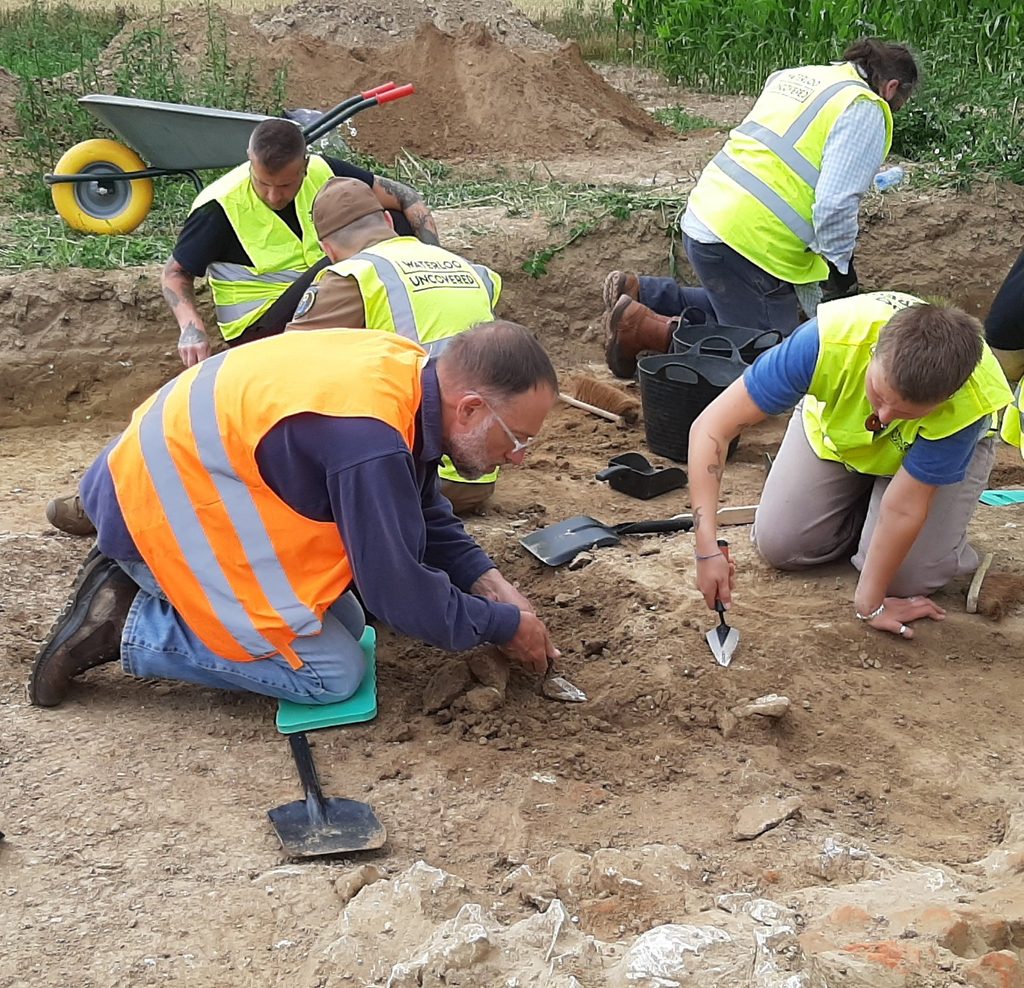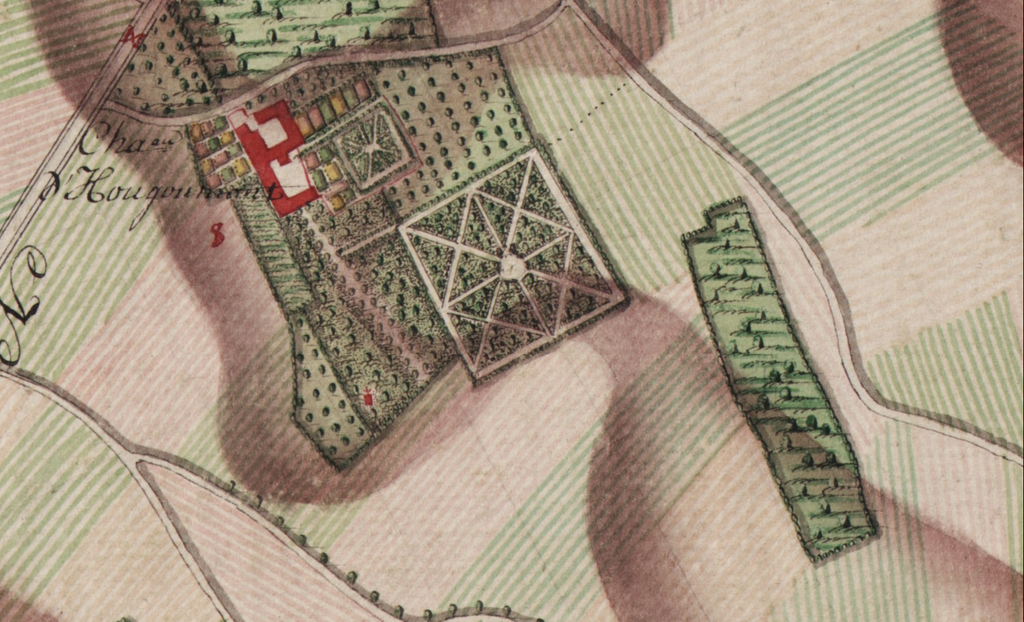Archaeologists working on the battlefield of Waterloo have unearthed a long-lost woodland chapel near Hougoumont Farm, scene of fierce fighting between Napoleon’s infantry and Wellington’s Guards, together with their German allies, during the epochal 1815 clash.
Limestone and brick remains from the chapel were discovered during a dig by Waterloo Uncovered, an international charity which works with veterans and serving military recovering from post-traumatic stress disorder and wounds sustained on operations.
Rear Admiral Renaud Flamant of the Belgian Navy was part of a team which unearthed the structure, about 1.5 metres below surface level, together with veterans from Ukraine, Britain, Germany, the Netherlands and Australia. “It was amazing to be part of this experience,” he said.

Admiral Flamant uncovers the historic landmark. ©chrisvanhouts
Excavation leader Dr Stu Eve commented: “From an archaeological point of view, this is very exciting. You expect to find musket balls and the detritus of war on battlefields – even bones from time to time – but not a chapel. “This was a site which will have been known and precious for the local community.”
Some of the bricks which were found are glazed, indicating they were used for decoration. The chapel was clearly marked with a small red cross on the 1777 map of the area created by Austrian General Joseph François, Comte de Ferraris. Both Napoleon and the Duke of Wellington used this map during the battle.

The 1777 Ferraris map, with the chapel clearly marked. Whether it was standing at the time of the battle is unknown.
But Dr Eve, director of creativity at MOLA (Museum of London Archaeology), said it was too early to be sure if the building was still in regular use at the time of the battle. “Whether it was standing or not, the stones will have provided good cover for the French as
they attacked through the large wood to the south of Hougoumont. It will have also been a target for the allies defending the farm. Our metal detectorists found a couple of partially flattened musket balls in the area which suggest they hit the building.”
The annual dig also turned up a small, ancient axe-head – possibly thousands of years old, the rusty remains of a Second World War anti-aircraft shell and bullet, as well as a quarry dating from the 18th century.

Dr Stu Eve Director of Creativity at the Museum of London Archaeology ©chrisvanhouts
The latter was uncovered near the chapel by Belgian archaeologists Dr Dominique Bosquet and Dr Véronique Moulaert of the Wallonia Heritage Agency (Agence Wallonne du Patrimoine, AWaP), who dug several trenches with the help of a mechanical digger.
Dr Bosquet commented: “The Ferraris map showed a depression in the ground and Waterloo Uncovered carried out a geophysical survey in the area a couple of months ago. It highlighted anomalies under the surface which is why we decided to dig here.
“All these finds are an important addition to our knowledge about the battle. We always want to know as much as we can,” he added.
Click here for more information about Waterloo Uncovered.
Dennis Abbott

